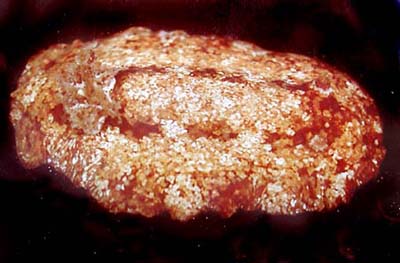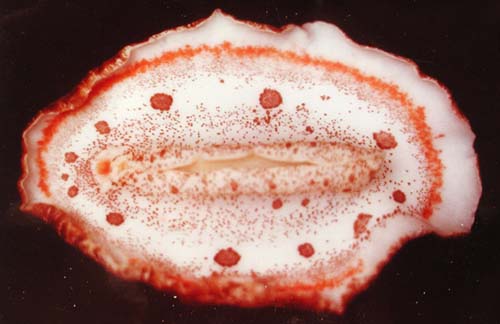This species has been observed on Reunion, Mayotte and Madagascar Islands
Species characteristics : The body shape is flat and wide The dorsum has areas of dark brown pigment and areas of greyish pigment. The ventral side has two rings of very small dark brown spots, one close to the foot and the other about halfway between the foot and the outer edge. The outer ring of spots is covered with a bright yellow ring of pigment. Between the two rings of small spots, slightly covering the inner ring, is a ring of much larger dark brown spots. |

|
|
| Showing species characteristics... | Photo Delphine Dupin Reunion, "La barge " at Saint Paul, 25 m, crawling on the sand during a night dive, 2 February 2007, size 110-120 mm |
|
Remarks :
Identification confirmed by Angel Valdés, Bill Rudman and Hsini Lin
Synonymous : (according Worms)
- No other name
Bibliographic data :
The dorsum has areas of dark brown pigment and areas of greyish pigment. On top of the background pigment there are many irregular tan and white spots arranged in a ring around the middle of the dorsum and also scattered more sparsely around the middle and outer edges of the dorsum. This pattern is very pale in D. Dupin specimen by more caracteristic in M. Jay specimen
The rhinophoral and branchial sheaths are elevated. The branchial sheath has six branchial lobes, with the anterior and posterior ones being larger than the others
The gill is composed of six tripinnate branchial leaves. The branchial leaves are very large and have tan leaves and white stems
The perfoliate rhinophores always have 39 lamellae.
References :
Bill Rudman Seaslug site : Sea Slug Forum : Platydoris inframaculata
Nudipixel Platydoris inframaculata
Publications :
Abraham P. (1877). Revision of the anthobranchiate nudibranchiate Mollusca with descriptions or notices of forty-one hitherto undescribed species. Proceedings of the Zoological Society of London. 1877: 196-269, pl. 28-30
Dorgan, K.M., A. Valdés & T.M. Gosliner. 2002. Phylogenetic systematics of the genus Platydoris (Mollusca, Nudibranchia, Doridoidea) with descriptions of six new species. Zoologica Scripta. 31(3): 271-319.
Other photos of Platydoris inframaculata :
.jpg) |
Seb Vasquez Reunion, Etang salé on the rocky coast, during the night, 3 january 2015 .jpg) |
.jpg) |
Maurice Jay |
|
A more caracteristic ventral side.... with two rings of very small dark brown spots, one close to the foot and the other about halfway between the foot and the outer edge. The outer ring of spots is covered with a bright yellow ring of pigment. Between the two rings of small spots, slightly covering the inner ring, is a ring of much larger dark brown spots.
|
Reunion, "Pointe des galets harbour", at Le Port, 2 m, 23 March 1986, size 95 mm.
|
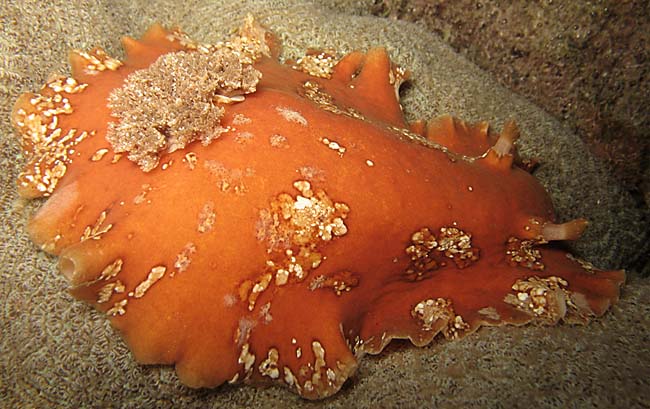 |
Hugues Flodrops Reunion, Etang salé on the rocky coast, 1,5 m, 30 January 2008, during the night, size : 180 mm. According Ángel Valdés : " I'm pretty sure this is a color variation of Platydoris inframaculata, in which the typical dorsal spots do not cover the entire dorsum but just small areas" |
The typical underside pattern 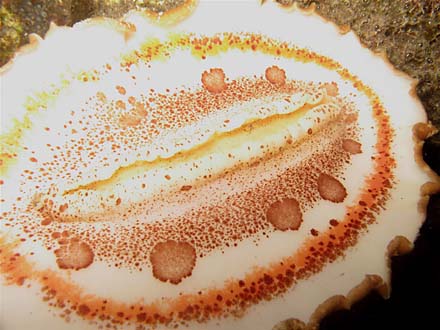 |
An unusual dorsal pattern... 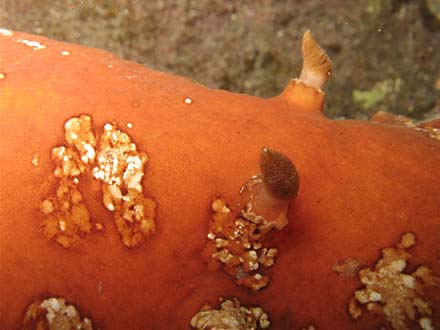 |
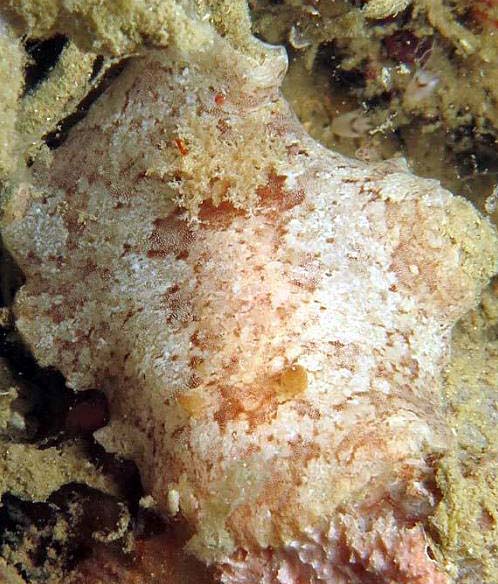 |
Alain-Benoît Rassat Madagascar, Nosy Bé, 17 m, size : 50 mm
|
More photos from Indian Ocean
Mayotte, ventral side of Platydoris inframaculata, at Pamandzi, by Norbert Verneau
